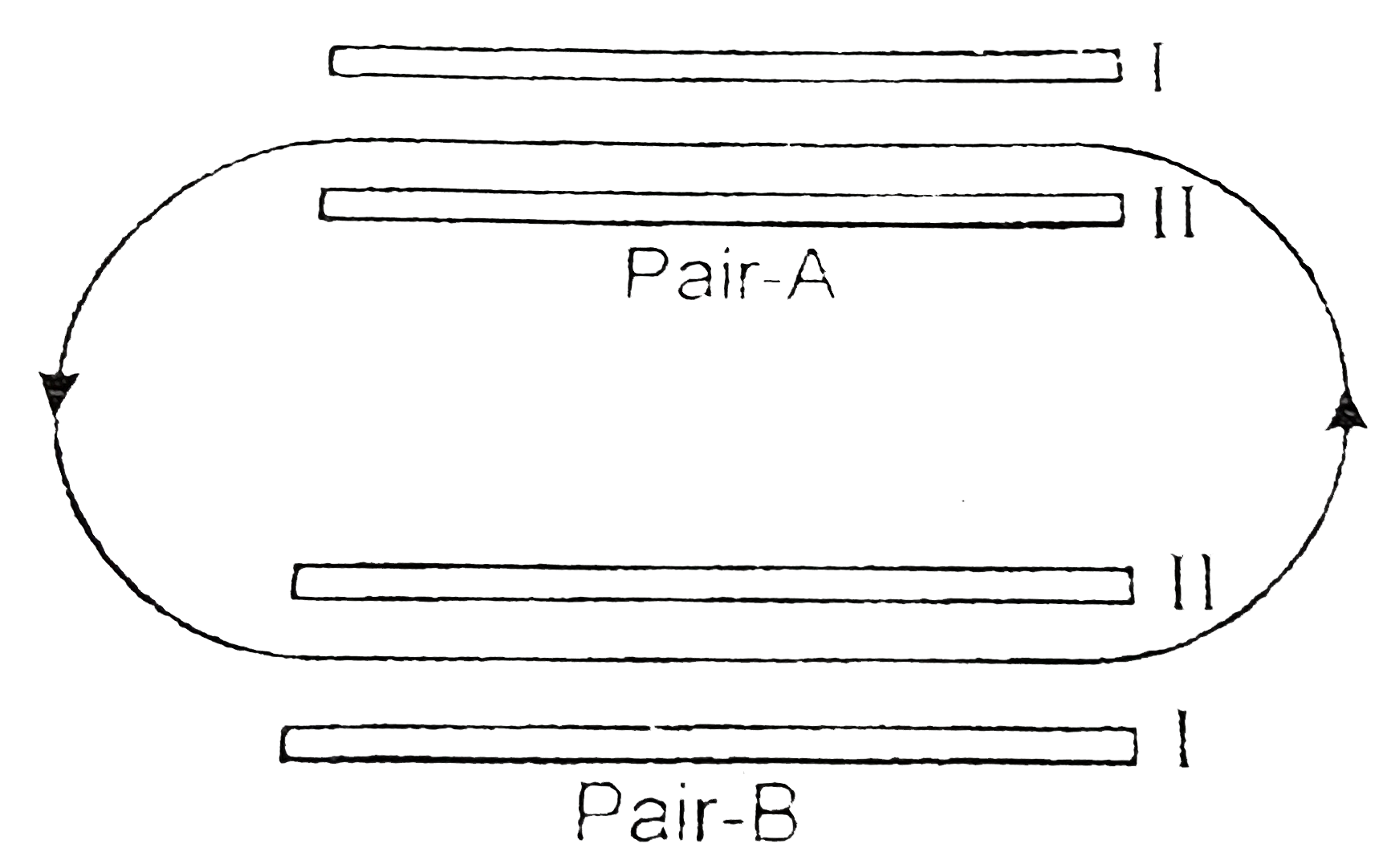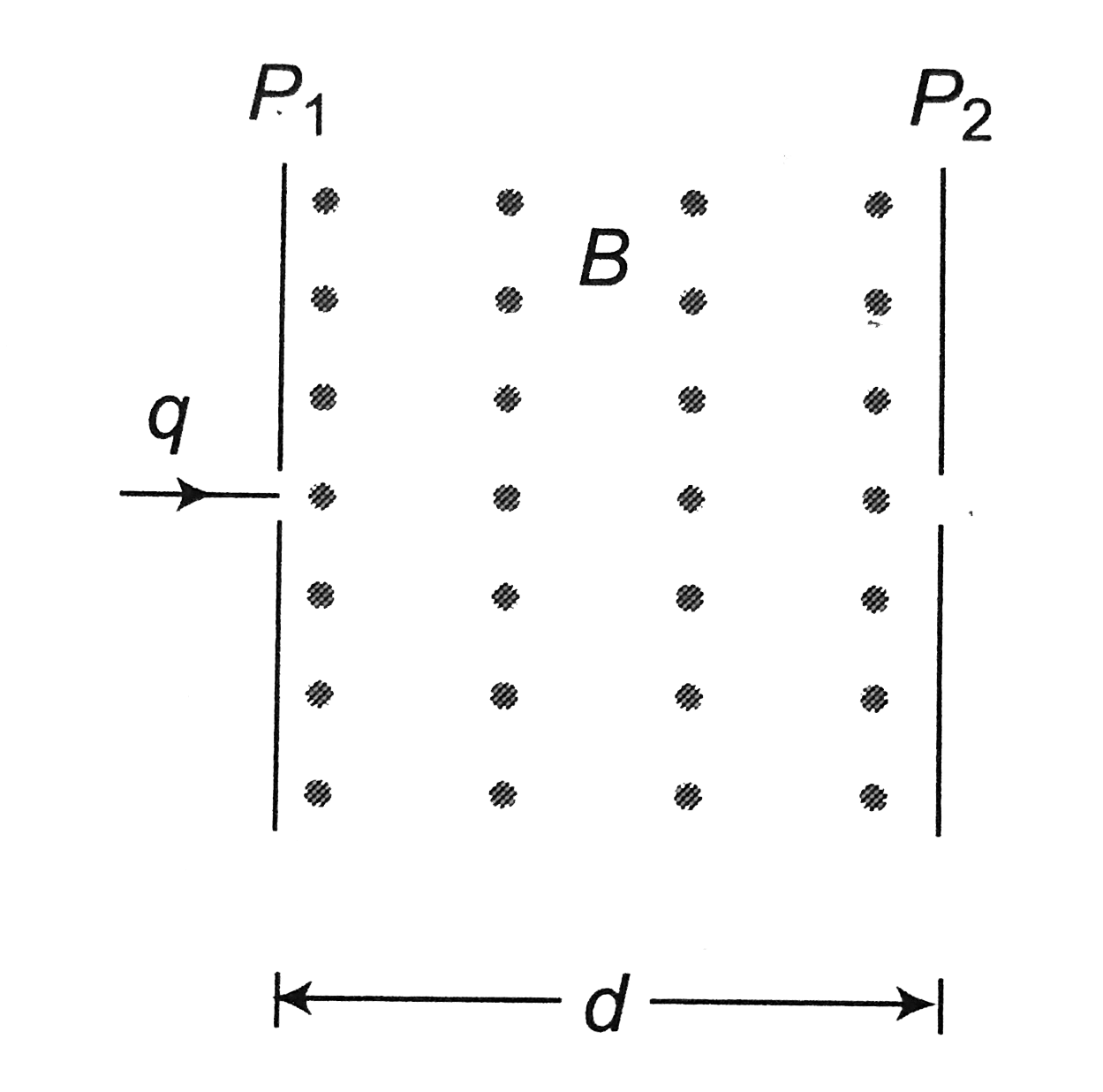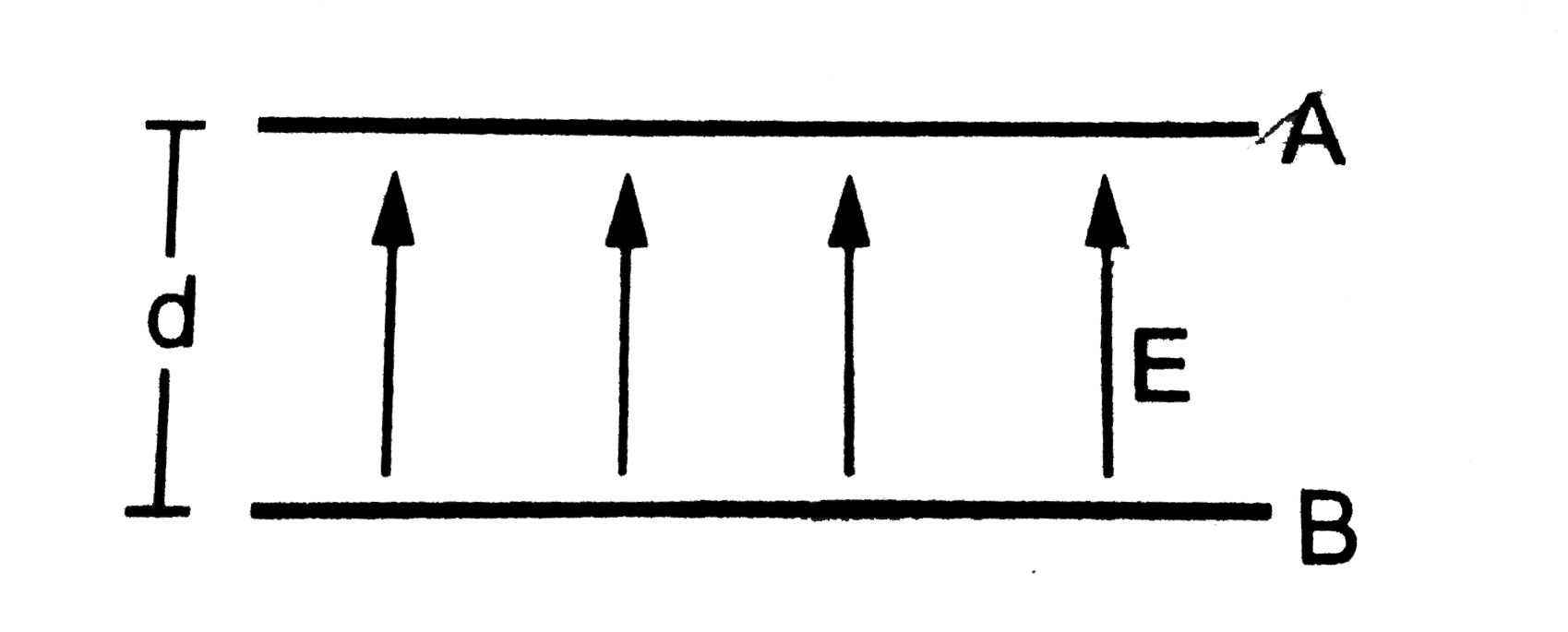Figure shows the path of an electron in a region of uniform magnetic field. The path consists of two straight sections, each between a pair of uniformly charged plates and two half circles. The electric field exists only between the plates

a. Plate I of pair A is at higher potential than plate-II of the same pair
b. Plate I of pair B is at higher potential than plate II pf the same pair
c. Direction of the magnetic field is out of the page [⊙]
d. Direction of the magnetic field in to the page [⊗]
The correct Answer is:A, B, C
Using −e(→V×→B) for the regin outside the plates, direction of magnetic field can be found. Inside the plates, net force on the electron is zero hence electric force is opposite to that of magnetic force. Direction of electric field between the plates is opposite to that of direction of forece on the negative (electron) charge.
Topper's Solved these Questions
- BOOK - RESONANCE ENGLISHCHAPTER - DAILY PRACTICE PROBLEMEXERCISE - DPP No.6120videos
DAILY PRACTICE PROBLEM
- BOOK - RESONANCE ENGLISHCHAPTER - DAILY PRACTICE PROBLEMEXERCISE - DPP No.629videos
DAILY PRACTICE PROBLEM
- BOOK - RESONANCE ENGLISHCHAPTER - DAILY PRACTICE PROBLEMEXERCISE - DPP No.599videos
DAILY PRACTICE PROBLEM
- BOOK - RESONANCE ENGLISHCHAPTER - CURRENT ELECTRICITYEXERCISE - High Level Problems (HIP)19videos
CURRENT ELECTRICITY
- BOOK - RESONANCE ENGLISHCHAPTER - ELECTRO MAGNETIC WAVESEXERCISE - Exercise 327videos
ELECTRO MAGNETIC WAVES
Similar Questions
Two thin infinite parallel plates have uniform charge densities +σ and −σ. The electric field in the space between them is
View SolutionThe path of a charged particle in a uniform magnetic field, when the velocity and the magnetic field are perpendicular to each other is a
View Solutionthe figure shows the path of A positively charged particle through a rectangular region of uniform electric field as shown in the figure. the direction of deflection of particle 2, 3 and 4 is
 View Solution
View SolutionTwo plates are 2cm apart, a potential difference of 10 volt is applied between them, the electric field between the plates is
View SolutionA charged particle enters a region of uniform magnetic field at an angle of 85∘ to the magnetic line of force. The path of the particle is a circle. Is this statement true or false?
View SolutionA charged particle having kinetic energy E enters normally a region of uniform magnetic field between two plates P1 and P2 as shown in the figure. If the particle just misses hitting the plate P2, then the magnetic field B in the region between the plates is
 View Solution
View SolutionAssertion If the path of a charged particle in a region of uniform electric and magnetic field is not a circle, then its kinetic energy may remain constant.
Reason In a combined electric and magnetic field region a moving charge experiences a net force
F=qE+q(V×B), where symbols have their usual meanings.View Solution(a) A closed loop is held stationary in the magnetic field between the north and south poles of two permanent magnets held fixed. Can we hope to generate current in the loop by using very strong magnets?
(b) A closed loop moves normal to the constant electric field between the plates of a large capacitor. Is a current induced in the loop (i) when it is wholly inside the region between the capacitor plates (ii) when it is partially outside the plates of the capacitor? The electric field is normal to the plane of the loop.
(c) A rectangular loop and a circular loop are moving out of a uniform magnetic field region (Fig. 6.8) to a field-free region with a constant velocity v. In which loop do you expect the induced emf to be constant during the passage out of the field region? The field is normal to the loops.

(d) Predict the polarity of the capacitor in the situation described by Fig. 6.9.
 View Solution
View SolutionFigure shows two metallic plates A and B placed parallel to each other at a seperation d. A uniform electric field E exists between the plates in the direction from plate B to plate A. Find the potential difference between the plates.
 View Solution
View SolutionTwo large conducting plates X and Y. each having large surface area A (on one side), are placed parallel to each other as shown in figure (30-E7). The plate X is given a charge Q whereas the other is neutral. Find (a) the surface charge density at the inner surface of the plates X, (b) the electric field at a point to the left of the plates, (c) the electric field at a point in between the plates and (d) the electric field at a point to the right of the plates.
 View Solution
View Solution

